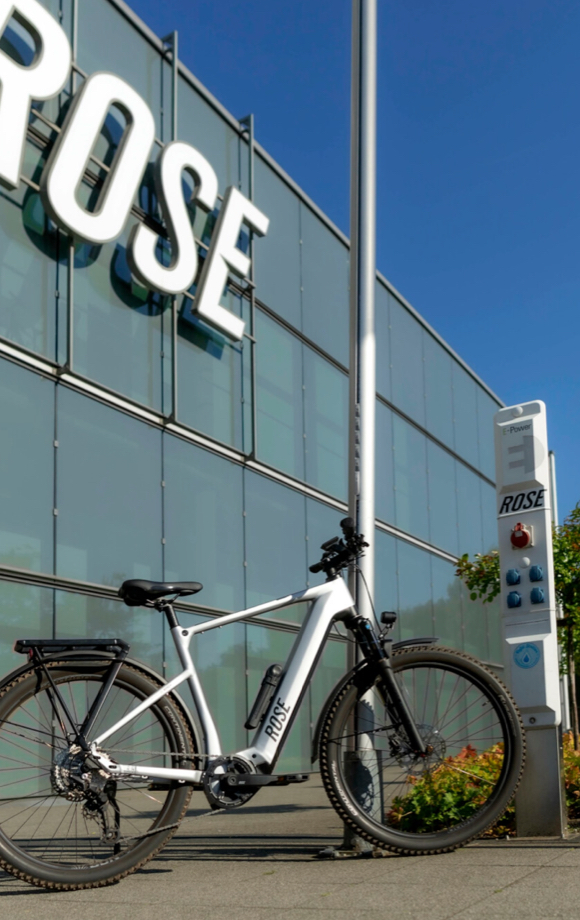The Netherlands as a Cycling Country
When it comes to cycling, urban and traffic planners from all over the world are looking at the Netherlands as a best practice example. But how did our neighbouring country develop into a cycling nation? We at ROSE took a look at how the Netherlands has become the world's leading example of a cycling nation and what we in Germany can learn from it.
The development of a cycling culture
Whether Amsterdam, Groningen or Utrecht – in most cities of the Netherlands, cycling is the most comfortable and fastest way to get from point A to B. Every day, more than 25% of all trips in the Netherlands are made by bike, whereas in Germany, that figure drops to around 10%. However, especially in the 1950s and 1960s that status quo was under threat. The timeline below shows how the Dutch cycling culture has developed over time.
)
“An ambitious promotion of cycling”
The Dutch government recognised early on that a high share of cycling in the total traffic volume would create a multitude of social and economic benefits for the country. It not only contributes to the quality of life in towns and cities, but also helps hit climate targets while having a positive effect on public health. The Dutch government invests over €600 million annually on bicycle infrastructure. The Dutch cycle 1000 km per year on average – whereas the people in Germany only cycle around 300 km per year – saving their healthcare system €19 billion per year. For this reason, the Netherlands wants to keep expanding the cycling infrastructure continuously in future. So the government has set the ambitious target to increase the number of bikes on the road by 20% by 2027. The following chart shows how the Dutch government intends to achieve this target.
)
Utrecht: A bicycle-friendly city
According to the 2019 Copenhagenize Index, Utrecht is the most bicycle-friendly city in the world – after Amsterdam and Copenhagen. In the city centre of Utrecht, 60% of all journeys are made by bicycle. But what makes it so attractive for the people living in the fourth largest city in the Netherlands to use a bicycle every day?
One aspect that encourages Utrecht’s citizens of all ages to cycle is that it is safe. There is hardly any other city where you feel as safe when cycling as in Utrecht. The city gives cyclists and pedestrians priority over motorised vehicles and is striving to ensure that, especially in the city centre, most trips can be done by bike, on foot or by bus and train. Commuters who do not live in the city centre are also sustainably connected to the city through a wide network of cycle paths. The city's aim is to continue to expand this network of cycle paths in order to increase the commuting distance with e-bikes and pedelecs to up to 20 km. The following illustrations show examples of cycle paths located in the immediate vicinity of Utrecht. They are intended to illustrate the quality of the cycle paths that the city provides for its citizens. Between 2015 and 2020 alone, the Dutch city has invested approximately €168 million of taxpayers' money in the expansion of cycling infrastructure and bike parking spaces.
)
)
)
Connecting different forms of transport
Another important factor that makes cycling in Utrecht so attractive is the excellent opportunities to park your bike and cover distances in combination with public transport. Thanks to the world’s biggest bike garage with 12,500 bike parking spaces located directly below Utrecht Centraal Railway Station, residents and visitors have the opportunity to seamlessly connect train and bicycle.
)
A holistic approach to mobility planning
For many of us, the time factor plays an important role when choosing a means of transport. Dutch cities therefore aim to plan new infrastructure projects in such a way that a person using a bicycle is not at a time disadvantage compared to people using other means of transport. A new cycle path not only has the function of enabling people to get from A to B quickly. It is a place of public life where children can play safely, where people meet in the evening and talk to friends without being disturbed by traffic noise. At the same time, however, it helps protect the environment since more people are using the bicycle for daily commutes.
The “Dafne Schippers Bridge“ in Utrecht is a perfect example of how to put this goal into practice. The 110-metre-long bridge, which connects the old town and the new town of Utrecht, was built in 2017 with the aim to allow around 7000 cyclists to save several minutes of time every day by using the bridge. The bridge represents an important meeting point for local residents and school children. Today, it is much more than a fast bicycle route – it shows how efficient urban planning can work and has become a symbol of a modern, connected city in Utrecht.
Prospects
After looking at Utrecht, one of the most bicycle-friendly cities in the world, we will look at what we can learn from the Netherlands in terms of cycling in Germany in the following articles. We will select German cities and test them for their bicycle-friendliness. We are convinced that German cities and municipalities can also benefit greatly from a balanced mobility mix in terms of quality of life, environment and public health.
)
)
)
)
)
)